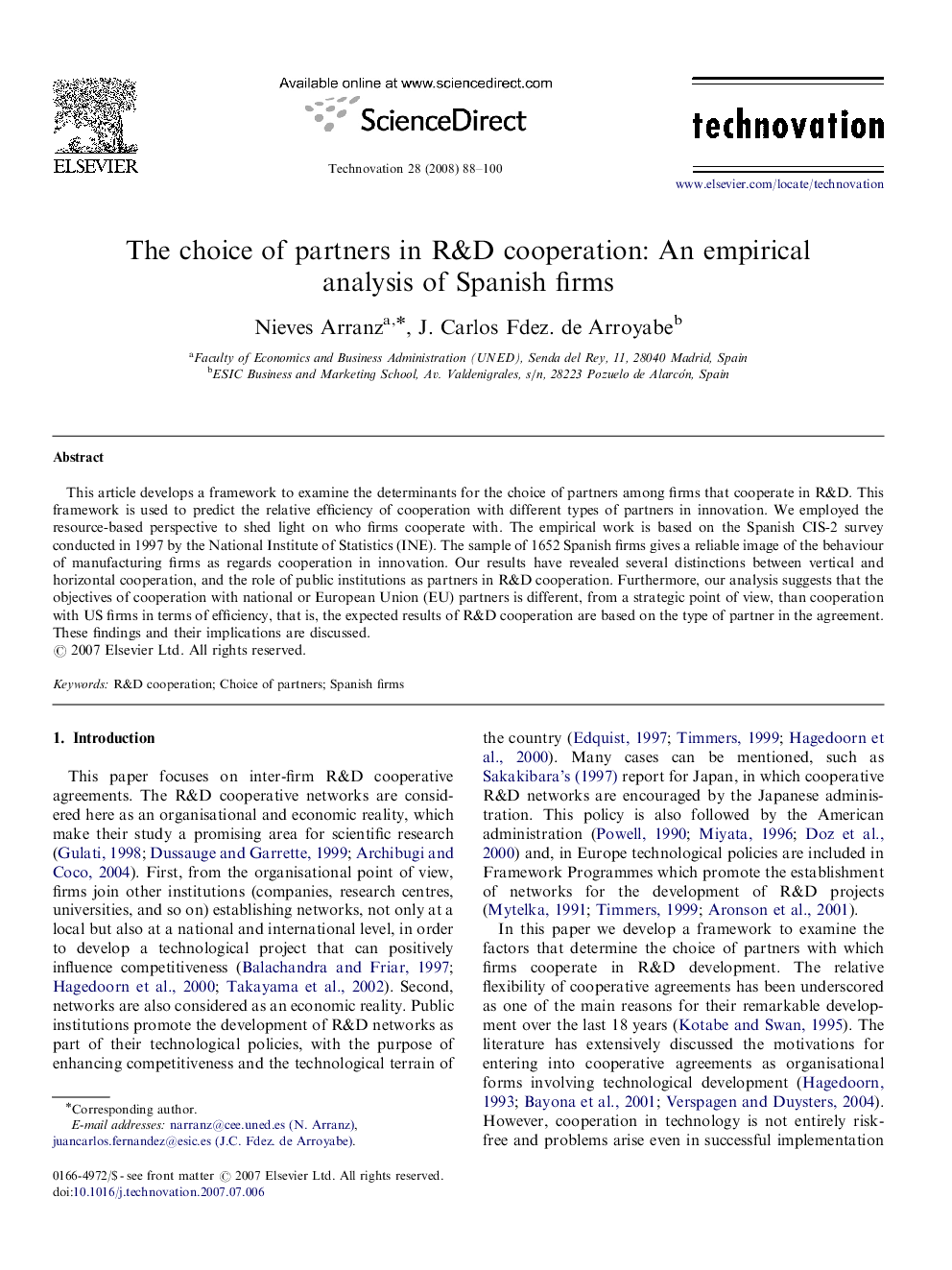| Article ID | Journal | Published Year | Pages | File Type |
|---|---|---|---|---|
| 1022845 | Technovation | 2008 | 13 Pages |
This article develops a framework to examine the determinants for the choice of partners among firms that cooperate in R&D. This framework is used to predict the relative efficiency of cooperation with different types of partners in innovation. We employed the resource-based perspective to shed light on who firms cooperate with. The empirical work is based on the Spanish CIS-2 survey conducted in 1997 by the National Institute of Statistics (INE). The sample of 1652 Spanish firms gives a reliable image of the behaviour of manufacturing firms as regards cooperation in innovation. Our results have revealed several distinctions between vertical and horizontal cooperation, and the role of public institutions as partners in R&D cooperation. Furthermore, our analysis suggests that the objectives of cooperation with national or European Union (EU) partners is different, from a strategic point of view, than cooperation with US firms in terms of efficiency, that is, the expected results of R&D cooperation are based on the type of partner in the agreement. These findings and their implications are discussed.
